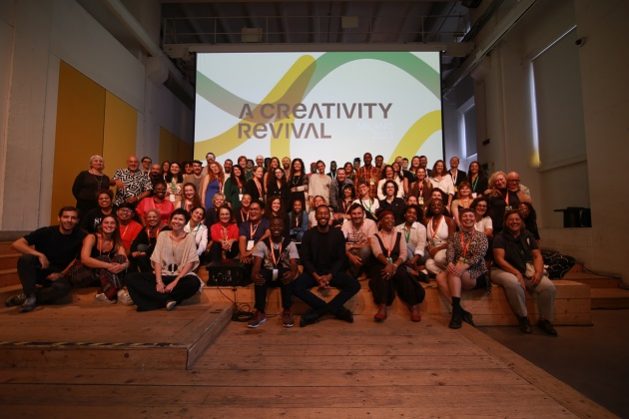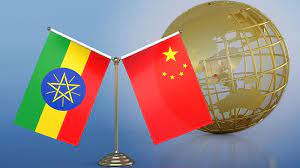
It all fits into an off-road vehicle that can reach even the most remote parts of Southern Africa to bring cinema where the essentials are lacking, where there’s no electricity to power a projector, and where perhaps no one has ever sat in front of a screen to watch a movie. With just the sun and a solar panel, a theater can be set up in areas where people struggle to access food and water and make a decent living. But what it truly requires is the courage to not view creativity as a luxury. Sydelle and Rowand, the founders of Sunshine Cinema, a network of mobile movie theaters, are not just entertaining people; they are crossing a bridge.
Crossing a bridge, that is what creativity leaders do, according to Lwando Xaso. She is a lawyer, writer, and storyteller from South Africa, and in mid-October, she was in Milan moderating a panel that posed a challenging question: “Can creativity change the world?” She was present at “A Creativity Revival,” an “un-conference” whose participants shape the agenda and content. They are the “Creativity Pioneers,” women and men whose work is supported by a fund from the Moleskine Foundation and who had gathered in Italy from various corners of the world. Much like Rowand and Sydelle, they answered that challenging question with a resounding “yes.” “Creativity is not just something cute. It’s not just something nice. But creativity is something relevant. That is the key element nowadays to transform society for the better,” said Adama Sanneh, CEO of the Moleskine Foundation.
Crossing a bridge, that is what South Africa is doing as well. “Our starting point is a place of violence. We come from a history of inequality, injustice, indignity, and oppression … We are moving across the bridge towards freedom, human dignity, equality, and justice. We’re moving away from trauma toward healing,” Xaso said.
According to “Assessing the Impact of Culture and Creativity in Society,” a course and publication from the Impact Research Center of Erasmus University in Rotterdam, one of the most significant challenges in effecting social change is changing people’s behavior. Or, perhaps, their “hearts,” as Xaso emphasized. “A revolution can change regimes, but for transformation, we need to change hearts.” Xaso also explained: “Creativity and art were instruments of liberation. At the core of the anti-apartheid movement lay creativity. The majority of the country was never going to win the war against the apartheid government with arms alone … It was never going to happen. So, what are the other tools that can change the world? There was music. There was poetry. The ANC built a culture and a department for culture because they saw it as an instrument that can liberate the country …Art and justice reinforces each other.”
Rowand Roydon Pybus is also in Milan, sharing his experiences in crossing bridges. His tool is a network of solar-powered theaters that screen films made in Africa for those who lack access or cannot afford it. These films spark conversations on critical issues such as land rights and gender rights, thereby fostering change. They shed light on often-overlooked subjects. It’s not about just screening; Sunshine Cinema engages young people and trains them as facilitators for these discussions. They use a vast collection of African movies to address vital questions in hyper-local environments, where the impact is most significant.
However, assessing the scale of creativity’s social impact remains a challenge. As Eva Langerak writes in Erasmus University’s magazine, “The assumption that the cultural and creative sector adds substantial value to society is widely debated, and the discussion on how that value takes shape is quite controversial.” The social impact of arts, culture, and creativity can be defined as “those effects that go beyond the artifacts and the enactment of the event or performance itself and have a continuing influence on people’s lives.” This definition draws from the 1993 multi-authored work “The Social Impact of the Arts: A Discussion Document.” Measuring the social impact of creativity is not a straightforward task, but the significance of the cultural dimension has been recognized to the extent that participation in cultural life is considered a human right, as outlined in Article 27 of the Universal Declaration. This participation is crucial as it underpins ‘the ability to represent oneself and exercise other rights, including freedom of expression.’
Representing oneself is closely tied to identity, which is one of the questions that “creative pioneers” in Palestine are addressing through the “Wonder Cabinet,” a project in Bethlehem. Designed by architects Elias and Yousef Anastas, the Wonder Cabinet is a space for creative communities to come together and establish a safe place for Palestinian voices to express themselves, not only with regard to creative fields but also to share, learn, and gain exposure to different experiences.
Art and creativity have a profound impact on society, encouraging critical thinking and prompting individuals to question their own experiences as well as those of others. This perspective is championed by authors such as François Matarasso, an artist, writer, and policy advisor, as well as Pascal Gielen. These insights hold particular significance in regions affected by conflict and warfare. In the words of Olena Rosstalna, the founder and manager of the Youth Drama Theater “Ama Tea” in Chernihiv, a city in northern Ukraine near the Russian border, the impact of art transcends the physical battlefronts. She observed, “It’s not just the war on the land; it’s also the war in the minds and for the minds, because the propaganda is very big. Brainwashing has persisted for decades.” Countering propaganda is among Ama Tea’s actions devoted to engaging the youth.
Olena describes herself as a “very small fish in a very big ocean,” yet she believes that everything starts from the ground up. “That’s why I’m deeply involved in grassroots initiatives in my work. Supporting local initiatives worldwide is crucial. It all begins with small steps and grassroots efforts. If we have a world of pioneers, one by one, all these initiatives will flourish into a beautiful garden,” she said. Communities often play a pivotal role in propelling social change. Community-led art projects unite people to brainstorm solutions for local issues, according scholars. Solutions even where it seems impossible – that’s the essence of creativity, as Adama Sanneh eloquently wrote in Folios, the Moleskine Foundation’s periodical: “Revealing and exploring what is possible in seemingly impossible contexts. It’s about radical imagination and enlightenment during times of ignorance and resignation”
SOURCE:(INTER PRESS SERVICE)
THE ETHIOPIAN HERALD WEDNESDAY 8 NOVEMBER 2023





